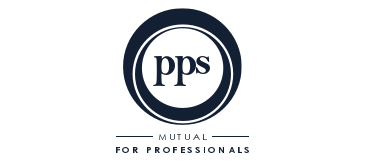INSIGHT June 22, 2020
When Life Insurance And Banking Don’t Always Mix – The Case For The Mutual Insurance Model

Another day, another major Australian bank selling its life insurance business.
I believe that the recent news that the future for Westpac-owned BT Life is under review – with a potential sale in the wings – is the final piece to be played in a complex, 20-year old jigsaw puzzle.
It emerged in the 1990’s, beginning life as a buzzword for the banking world’s aspirations to upsell customers with non-bank financial products and services.
Banks selling life insurance policies? Sure. Let’s call it bancassurance.
It was a much-hyped strategy at the time, complete with its catchy 90’s buzzword. It envisioned a brave ‘one-stop-shop’ world beyond the once established mutual brands (venerable names now gone by the wayside like National Mutual, Mercantile Mutual and Norwich Union to name a few) and those it was ready to subsume, like Colonial Mutual.
Forget the centuries old mutual model placing the member front and centre of product and purpose, the modern juggle to balance the competing interests of policyholders against shareholders was on in earnest. Twenty years later and the bancassurance idea is virtually sunk. Why? The inevitable challenge is not just the vertical integration issue of in-house product being sold to bank customers through owned intermediary channels. It is an even bigger story of age-old conflict between the interests of shareholders versus customers.
With the tide turning against the public reputation of Australia’s major banks over poor consumer outcomes especially in life insurance product sales, each of the big four banking brands began in 2016 to move away from their life insurance investments.
The end of the grand privatisation experiment into life insurance by the banks (as well as other non-core wealth management services like financial planning, superannuation, and investment administration) was imminent.
A key measure in the publicly listed company paradigm – return on equity numbers – had stretched to breaking point. Life insurer subsidiaries were also sucking up huge amounts of capital.
People also need banks and banks become used to being in a position of power vis-à-vis their customers. To me, this has resulted in a lack of understanding and complacency by the banks when it comes to life insurance distribution.
So it was that in 2016 NAB sold 80 per cent of its life insurance business MLC Life to Nippon Life for $2.4 billion. ANZ followed suit in late 2017, with the sale of its OnePath life insurance arm to Zurich Insurance for $2.85 billion. This was followed by AIA Group’s purchase of CBA’s life insurance interest CommInsure in 2018. Ironically, while CBA and ANZ divested themselves of their life insurance assets – they have not divested themselves of their conflicts of interest, in that they have entered 20-year strategic alliances with AIA and Zurich. Which, in 2020, leaves Westpac, and its BT Life business now knocking on the door of a new future under a new owner.
A re-set underway?
Is the divestment of life insurance assets by the banks reflected elsewhere in their operations?
Yes, a parallel has also played out in the financial planning space. A key reason for setting up Centric Wealth (in my previous life prior to PPS Mutual) was that the banks were buying out all of the medium to large size privately owned financial planning businesses. So, there was a great opportunity for a substantive non-aligned ‘client centric’ wealth advice business which put its clients’ interests first. Those same financial advice brands the banks bought, have now been sold off or shut down. Think of the financial planning brands Securitor and Magnitude now closed by Westpac. Or the Count Financial business sold by CBA last year. Or the Millennium3 and RetireInvest brands once ANZ-owned, now also sold.
Similarly, the rush we have seen by the banks to accumulate investment assets under management on portfolio administration platforms or in superannuation products has also tapered, as the four major banks revert to their traditional banking roots and business models.
A divestment and simplification trend of this magnitude is open to various points of view and interpretation. For some it is retrograde and risky. For others, such as myself, it represents a welcome ‘back to the future’ scenario and invites the re-emergence of a future made brighter for the provision of high-quality financial products and services to the Australian community.
Further, the question has been asked: will this bank-induced ‘re-set’ deliver more or less appropriate outcomes across the spectrum of financial advice, insurance, investments, superannuation, and portfolio administration?
I feel that a renewal of purpose aligned around the best interest of the consumer is underway and will indeed deliver a more sustainable outcome both for industry and the human beings it serves.
A central argument is that, with the constraints that ultimately killed off the bancassurance business model removed, remaining industry and the emerging profession of financial advice (not product sales) can grow by focus on an abiding core purpose: client centric customer care.
No return on equity pressure, no shareholder dividends nor short-term sales targets to meet the next quarterly return nor subsidised advice models to uphold. Simply providing appropriate products, services or professional counsel that aligns with the very best interest of one master – the consumer. Interestingly, two of Australia’s largest insurers, TAL and MLC, are now owned by mutuals. In 2011 Dai-ichi Life purchased TAL and as mentioned previously, Nippon Life acquired a majority stake in MLC Life. So, TAL and MLC are essentially assets in Dai-ichi and Nippon’s portfolios with the profits going overseas. In contrast, PPS Mutual is owned by its Australian members who share in the profits of the products that they buy. But mutual ownership should help ensure that they all take a longer-term view – where the long-term nature of insurance contracts and profit emergence is more fully understood.
Additionally, we believe that the trustworthiness and reputation of mutual companies is a large part of their continued success and growth around the globe. With the worldwide economic impact of the COVID-19 pandemic still reverberating, the capacity for recovery after a crisis is a key part of the mutual promise. Recent evidence backs this up, with research by the International Cooperative and Mutual Insurance Federation (ICMIF) showing that, after the 2007 Global Financial Crisis, the mutual and cooperative insurance market was the fastest growing part of the global insurance industry in the ten-year period since. In fact, premium income of the global mutual/cooperative insurance sector grew by a total of 30% over 10 years to 2017. Also, some 1.16 million people were employed globally by the sector in 2017 representing a 24% growth rate of employment since the challenging days of the 2007 GFC crisis.
Above all the strong economic signs, I feel that it is the fundamental mutuality principle of sharing profits with policyholder members and looking after their interests and needs first that has stood the greatest test of time.
This is so vitally important and explains how far we have come in Australia from the ‘bancassurance experiment’ to go full circle and create a strong and sustainable mutual business with products and services that follow this most eminent member first principle.



